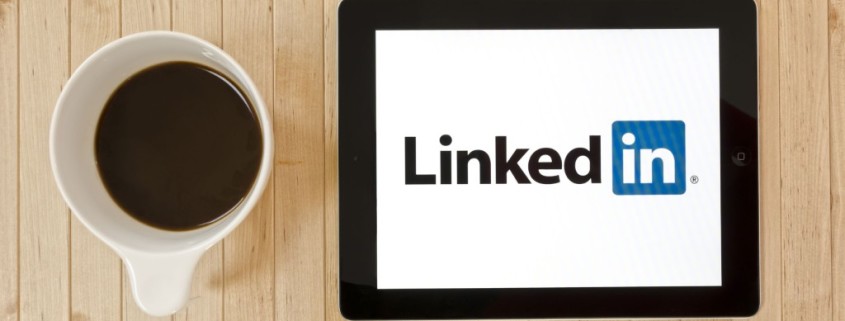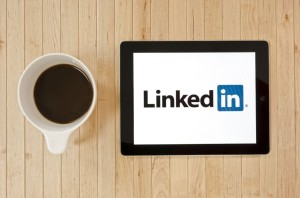#JobSearch : Want Recruiter Attention? Use These Proven LinkedIn Messages. Do Know How a Recruiter Work? A MUst REad!
I got another email from a Baby Boomer who asked me for a list of good headhunters he could approach to find him a job. I had to shake my head because this is not how recruiting works. I spoke to Biron Clark, a former Recruiter and the Founder of CareerSidekick.com, a popular job search advice website. He worked for two agencies and recruited for small tech organizations, midsize, and Fortune 500 companies looking to hire new employees.
“Many job hunters make fatal mistakes when they approach recruiters on LinkedIn,“ Clark stated. “Job seekers, especially Baby Boomers, have no clear understanding of the real role a recruiter does.”
Biron shared his personal experience and insight. He said, “Before you ever send a recruiter one word, you need to realize how recruiters work and how they get paid. A recruiter is compensated by the hiring company to find appropriate people to fill the specific job openings. They are not paid to find jobs for people.” That means a headhunter or recruiter is NOT going to shop your resume around and find a job for you.
“Recruiters get a job opening assignment. Then, the Recruiter looks for individuals with certain types of skills to fill that specific job,” Clark continued. “Research the recruiter before you email them. Find the appropriate recruiters who do searches in your field,” he recommended. “You will be more successful if you target five appropriate recruiters than if you randomly blast 50 recruiters that don’t have any job openings for people in your industry or with your skills.”
For example, if you are in healthcare sales, seek out 4-5 healthcare sales recruiters, and research them. Look at their LinkedIn profile and google the company they work for. Recruiters do not want you to waste their time. “Be targeted now when we have so many people job hunting,” he cautioned.
Like this Article? Share It! You now can easily enjoy/follow/share Today our Award-Winning Articles/Blogs with Now Over 2.5 Million Growing Participates Worldwide in our various Social Media formats below:
LinkedIn: https://www.linkedin.com/in/chris-g-laughter-b46389198/
Twitter: Follow us @ firstsunllc
Best Daily Choice: Follow the Best of FSC Career Articles/Blogs @
https://twitter.com/search?q=bestoffscblog&src=typeahead_click
Question: Want the ‘the best/current articles/blogs on the web’ on Job Search, Resume, Advancing/Changing your Career, or simply Managing People?
Answer: Simply go to our FSC Career Blog below & Type(#Jobsearch, #Resume, or #Networking) in Blog Search: https://www.firstsun.com/fsc-career-blog/
What Skill Sets Do You have to be ‘Sharpened’ ?
Article continued …
Clark has received hundreds of messages from job hunters on LinkedIn trying to get his attention. Most got ignored. He talked to colleagues, including fellow recruiters, coaches, and other experts. He found that they follow a similar pattern when deciding which messages to respond to. Here are his guidelines on what LinkedIn messages are effective and which ones won’t work.
Making Initial Contact
Any time you are messaging an HR person or recruiter for the first time, follow these rules, and you will get more responses.
Ask for something small to start.
· Show you have done some research into the topic and into the person you’re contacting.
· Personalize the message for this individual. Always have at least one spot that you have personalized, so they know the communication is not a cut & paste message sent to multiple people.
· Avoid attachments, which can overwhelm the reader or make your message appear like a sales pitch
· Make your message concise.
Send something like this:
“Hi Michael, saw you mention working with biotech companies here in Seattle. I am a Research Scientist in biotech, and I’m thinking of testing the waters. Can I send you a resume and maybe we can work together?”
Don’t Send these Messages
Messages with an attachment. When you receive a message on LinkedIn and open it to begin reading, LinkedIn first shows you the bottom of the message. Then, you scroll up to start reading at the top. Recruiters really dislike this assertive approach. Also, salespeople often attach things to a first message, so that’s one more reason the reader will have their guard up when they see it, and one additional reason this approach does not work.
Can you take a look at my profile and see which jobs I’m a fit for? This is a standard message received by anyone with “Recruiter” in their LinkedIn headline. Recruiters receive many messages like this each week, and most people who send them are not qualified for any of the roles that the recruiter is working on at the moment. Some people sending this type of message are not even in the same field or industry as the recruiter.
Instead, try this:
“Hi (RECRUITER FIRST NAME). I saw you recruit in sales and marketing here in Boston. I am a Sales Manager at XYZ Company, and I’m considering a change. Do you know of any Sales Manager positions here in the city? Would love to talk if you do. Thank you for your time!”
Recruiters typically specialize in an industry or niche, which is vital to consider before clicking “send.” Being specific rather than generic increases the likelihood that the message will be read and responded to.
Please look at my resume /LinkedIn and let me know what to improve. This won’t get a response. You are asking the recruiter to do your work. They can’t answer quickly if they are to offer constructive feedback, so they don’t spend any time answering at all.
Can you forward my resume on to the hiring manager for position X? You won’t get a response. If the recruiter sends your resume to the hiring team, the recruiter is recommending the candidate. A recruiter is highly unlikely to do this for a stranger unless you are a perfect match for the opening.
One conversation-starter that works
Explain to the recruiter you were doing some research and considering applying for the job but wondered how they would describe the work environment and whether they have enjoyed the company since joining. This is a simple, non-threatening question where you ask for one person’s genuine opinion (so they will immediately understand why you thought to message them).
Example of a successful Message:
“Hi, Tim. I saw a Microsoft job posting recently for an Enterprise Project Manager role. Is that the group you’re in? I was curious about how you have enjoyed the work environment there since coming over from Amazon 2 years ago. I have read some great Glassdoor reviews on Microsoft online, but I always like to ask someone first-hand, too.”
Why is this message likely to succeed? It is a small request, so the recipient is more likely to reply. You are also confirming that they work in the relevant department/group. You also show you have done some research and checked out their profile.
The Bottom Line
Sending direct messages on LinkedIn is a great way to expand your network, get help and advice, and get introduced to hiring managers. And while not every message will get a reply, you can improve your chances of hearing back from recruiters by asking one specific question, personalizing your message, and showing them that you have done your research before contacting them.
Forbes.com | October 1, 2020 | Robin Ryan




